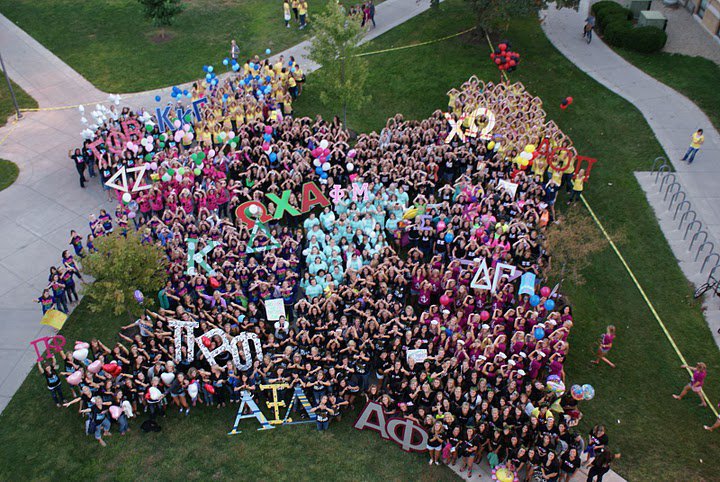
When most people think of meditation, they think of Hinduism or Buddhism.
But meditation is central to many religious faiths, including Christianity, Islam and Judaism. A Pepp Post poll of 59 students found that 44 percent of students meditate.
“If God is a mystery,” said Eric Wilson, associate chaplain of Pepperdine University, ”then this time of meditation helps normalize my relationship with the mysterious.”
While there are many religious applications of meditation, there are just as many non-religious applications. Regardless of the motivation, people meditate because it works for them.
Most people meditate because they experience mindfulness, a heightened state of awareness involving one’s mind, body and emotions, as a byproduct. This in turn leads to reductions of stress and anxiety. Others turn to meditation in order to deepen the understanding of their faith.
What is meditation and why do people do it?
“Meditation is the same as prayer and mindfulness or any other mental discipline,” said Cecily Breeding, a Pepperdine graduate student in religion and a yoga teacher. “Same in the sense that meditation is to fix your mind on something, to be one pointed.”
Meditation, more than anything, is a break. It’s a conscious effort to stop thinking about everything, and simply focus on one thing. For many, that one thing boils down to the present moment and its contents, whether it’s someone focusing on God, their breath or nothing.
“People need to know there isn’t one way to meditate,” FORM founder Kathryn Linehan said. “It doesn’t have to be done sitting still, it has to be done in a way that suits you and your lifestyle.”
Many people misconceive meditation as someone sitting in the Lotus position chanting “ohm.” While that is one way to meditate, it’s by no means the only way to meditate, Linehan said.
Brushing one’s teeth, eating a meal, doing laundry, driving, and all the other mundane activities people do everyday, are opportunities to meditate by doing them mindfully, Breeding said.
The goal of doing things mindfully is to do it with intent and focus on that one activity. For example, if one’s goal is to mindfully eat a meal, they take care to not rush, not multitask, not stuff themselves, while making considerations such as how the food will turn into nutrients for their body and the origins of the food.
Developing a habit of doing things mindfully can be extremely beneficial as it teaches people to live in the moment, Breeding said.
Jay Bays, author of “How to Train a Wild Elephant: And Other Adventures in Mindfulness,” writes that if one’s mind is not focused on the present, there are three other places it could be. It could be focused on the past, dwelling on regrets. It could be focused on the future, obsessing over things that are yet to come. Or it could be focused on fantasy, and working through a conversation that is never going to happen.
The problem with being focused on the past, future or fantasy is that it’s very strenuous for the mind.
“When you maintain presence,” Breeding said, “focusing on what you’re doing in the moment that you’re doing it, that’s when the mind is resting.”
This is the intersection of meditation, mindfulness and prayer, as these are all disciplines striving for that goal of conscious rest.
Beyond the effect it has on the mind, there are also many tangible benefits to this conscious rest in terms of mental health.
In a September-October 2000 issue of the Journal of Behavioral Medicine, Michael Speca Linda Carlson Eileen Goodey and Maureen Angen conducted a study in which 90 cancer patients participated in a weekly meditation group lasting an hour and a half. After seven weeks, the treatment group scored significantly lower in total mood disturbance, meaning the group experienced less depression, anxiety, anger and confusion and more vigor than the control group who did not participate in the meditation class.
The treatment group also experienced fewer symptoms of stress, or less emotional irritability, depression and cognitive disorganization. Overall, the treatment group experienced a 65 percent reduction in total mood disturbance, as well as a 31 percent reduction in symptoms of stress.
The poll found that students report similar benefits for meditation compared to the benefits they experience after prayer.
Using the body to still the mind
“When you’re using your body,” Breeding said, “when your heart, lungs and muscles are all working together, you feel more unified. And that’s the goal of yoga, yoga means union.”
This is part of the reason yoga is so popular worldwide. Many people find they meditate best when their meditation is paired with physical activity such as yoga or FORM.
FORM is a movement meditation that’s physically based off pilates exercises and can be considered an embodiment of prayer. During the exercises, the mental goal is to “rotate meditative thoughts through one’s mind,” Linehan said.
Physically meditative practices all strive to make conscious rest more accessible to the mind.
“Yoga is hard,” Breeding said, “but it makes life easy.”
Meditation in the Christian context
“First I thought prayer was an obligation,” Wilson said, “then it turned into actual communication, now I just think of prayer as relationship. It’s communication but it’s really shorthand for being able to rest well in the intimacy of God’s presence.”
This is where prayer really comes into the intersection of all three practices. Because while prayer can be referred to as “resting in the intimacy of God’s presence,” the goal of Christian mindfulness and meditation is to live life with a constant awareness of God’s presence.
“God is like a friend,”Wilson said, “the more time you spend with that friend, the easier it is to do nothing with them.”
No one needs to go out and start an hour-long daily meditation practice to get closer with God. All they have to do, is take everything they already do, and make it meditative, Breeding said.
“Meditative doesn’t mean you need to do it slowly or somberly,” Breeding said, “it just means do what you already do, with an awareness of the presence of God. An awareness that this is what I’m doing in this moment and it’s a gift. That leads you to appreciate what you’re doing in the moment that you’re doing it.”
Prayer and meditation amongst Pepperdine students
The poll found that more students pray than meditate.
Of the students surveyed who do not meditate, 29 percent indicated they don’t have the time, 26 percent indicated they felt it was pointless and 24 percent simply don’t know what to do.
“I don’t meditate because I’m happy and I don’t need to,” said Peter Spafford, a junior political science major.
Spafford said he doesn’t feel a need to meditate because he consistently prays.
“I don’t meditate because it doesn’t feel as though it’s worth spending my precious downtime to do so,” said Warren Nagle, a junior business administration major. “I collect my thoughts when I pray or whenever I have time to myself so I don’t feel the need to meditate.”
Junwen Heng, a junior business administration major was initially skeptical about the prospect of meditation, thinking it wasn’t worth his time until he tried it.
“Meditation has allowed me to not only calm and center myself,” Heng said, “but to appreciate the simpler things in everyday life.”
Heng, like 45 percent of students surveyed who do meditate, got into the practice through a friend.
“Growing up where I did, life was quite hectic and fast paced,” Heng said. “Therefore I would’ve never begun to meditate if it wasn’t for a friend getting me into the practice.”
Jacob Fields completed the reporting for this story under the supervision of Dr. Christina Littlefield and Dr. Theresa de los Santos in Jour 241 in spring 2018. Dr. Littlefield supervised the web story.



